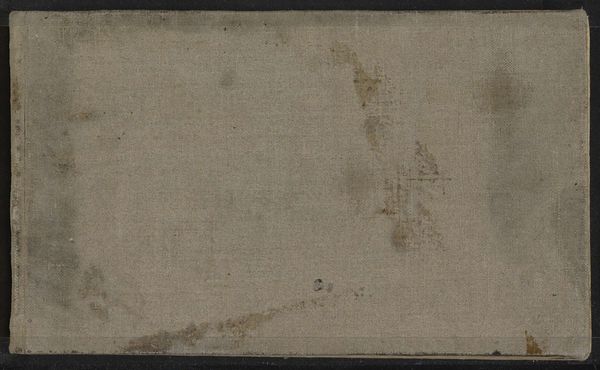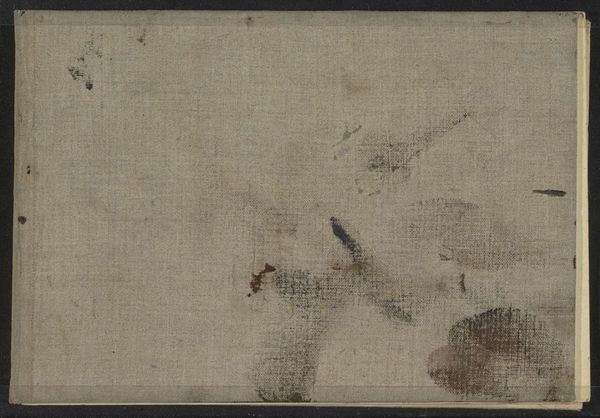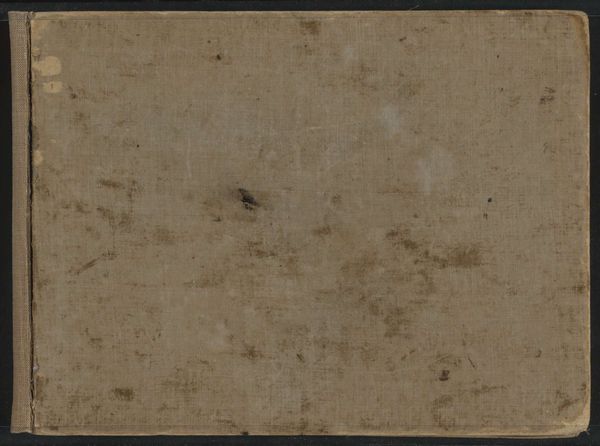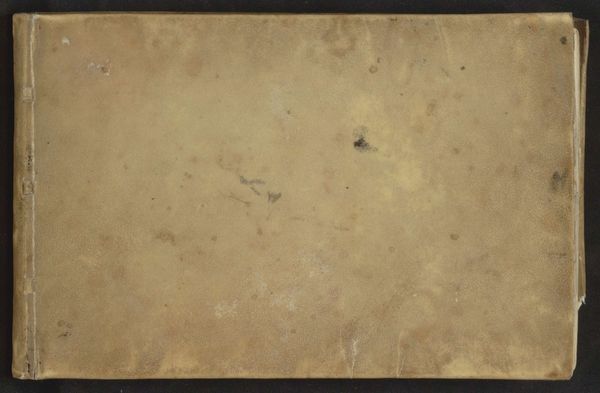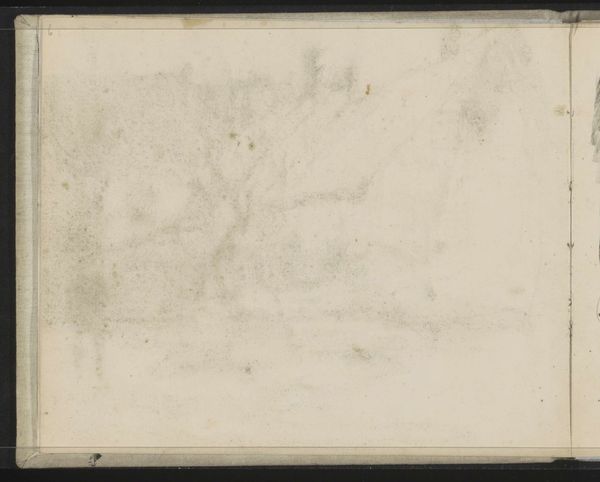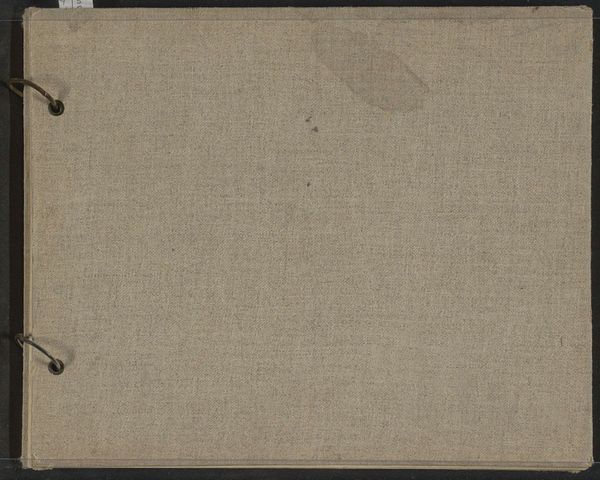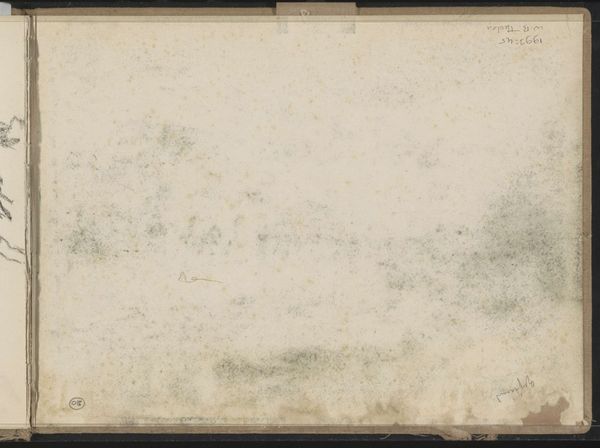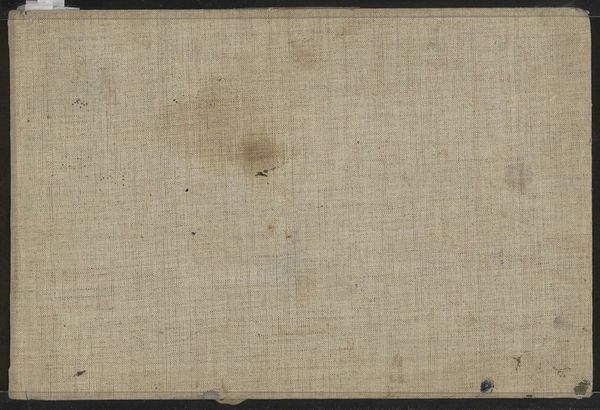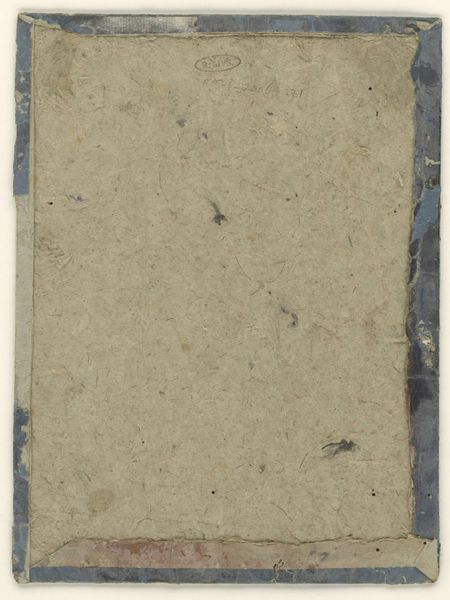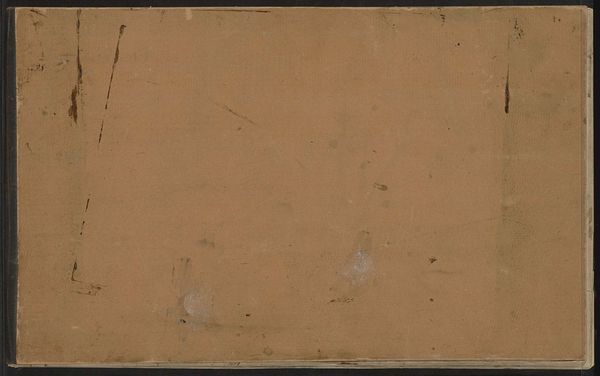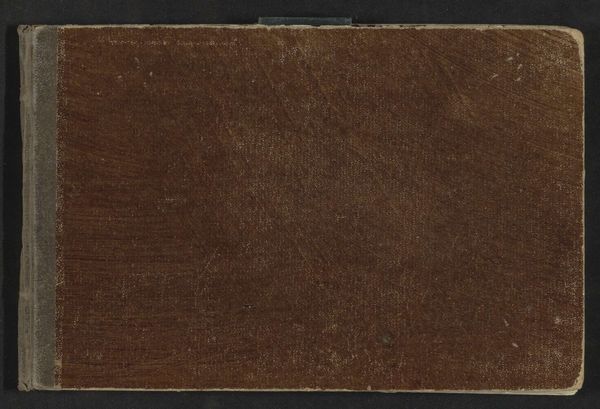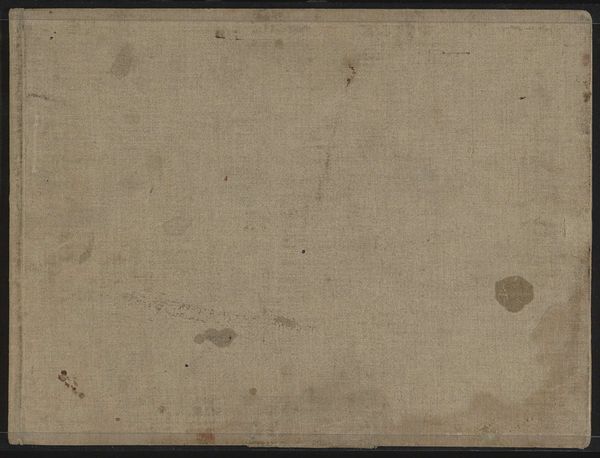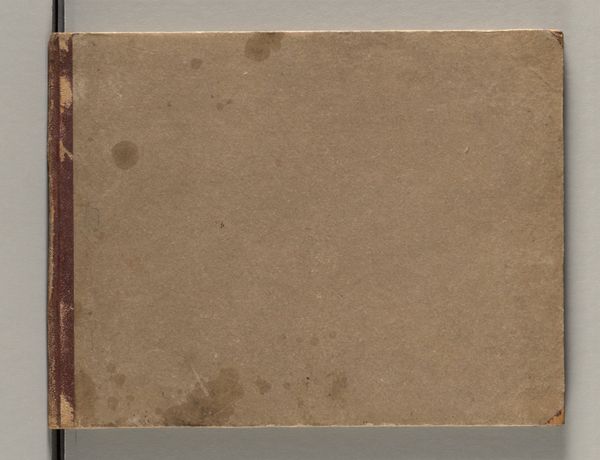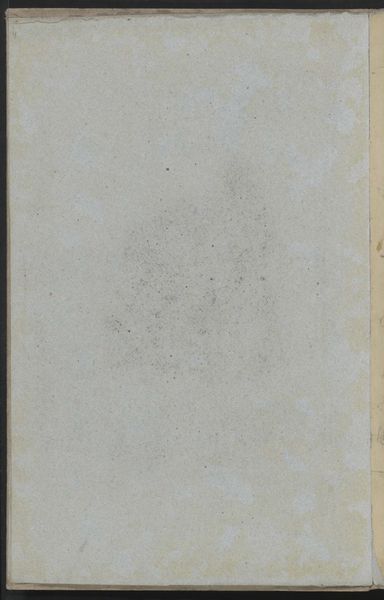
Dimensions: height 136 mm, width 228 mm, thickness 11 mm, width 460 mm
Copyright: Rijks Museum: Open Domain
Curator: At first glance, this object seems rather unremarkable. It’s "Sketchbook with 25 Pages," created between approximately 1887 and 1897 by Willem Witsen. It currently resides here at the Rijksmuseum. Editor: It certainly gives off a humble, unassuming vibe. The off-white, slightly mottled surface punctuated by seemingly random blotches of colour creates this feeling. The marks appear casual, accidental even, rather than consciously placed. Curator: I find myself intrigued by the "accidental" nature. It invites us to consider the artist's process, almost like viewing the residue of artistic labour. This was the artist’s personal toolkit; the stains bear witness to a sustained engagement with colour. It prompts a question of how private artistic development existed in the Dutch art scene during a rapidly changing era. Editor: The cover does function as an index of sorts. The scattered paint flecks give it a unique personality. The colours themselves are quite muted: some blues, ochres, greys… Do these hues hold symbolic value beyond their use within Witsen's individual paintings? Perhaps mirroring the damp atmospheric mood characteristic of Dutch Impressionism? Curator: Possibly, though interpreting the color's intrinsic symbolic worth becomes challenging on a simple book cover. From a historical perspective, sketchbooks such as this showcase the preparatory phase of the artistic process. The Impressionists embraced depicting ordinary subjects of modern life, like cityscapes. This intimate view of his sketchbook invites reflection on what Witsen and his artistic contemporaries saw as relevant or worthy of study. Editor: It almost feels like a personal journal in a way. Though wordless, it still implies narrative and visual ideas that held value for Witsen himself. It’s fascinating how these colours can subtly evoke nostalgia, melancholy, the patina of memory. Curator: Precisely, even in this fragmented and oblique form. I feel we can sense the presence of artistic lineage here. Editor: Indeed, an understated portal to a past. It almost beckons viewers to envision the experiences of an artist and perhaps draw upon their own inner repository of symbolic associations.
Comments
No comments
Be the first to comment and join the conversation on the ultimate creative platform.
